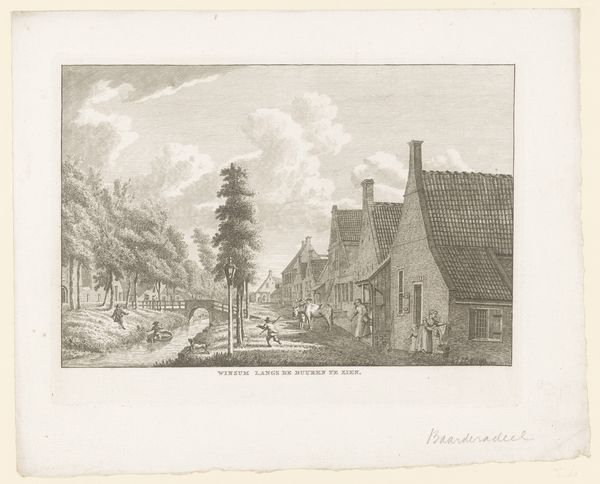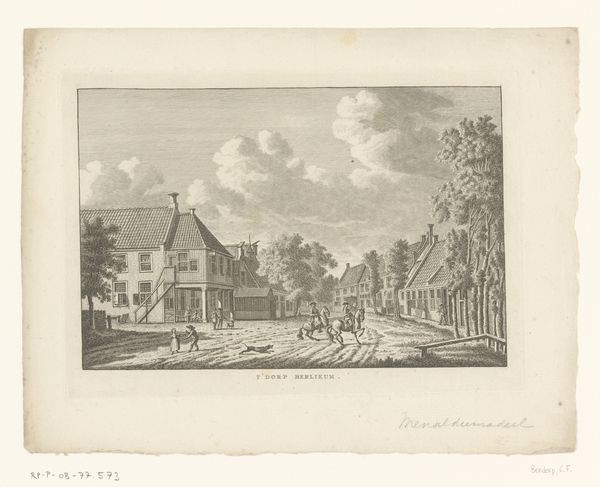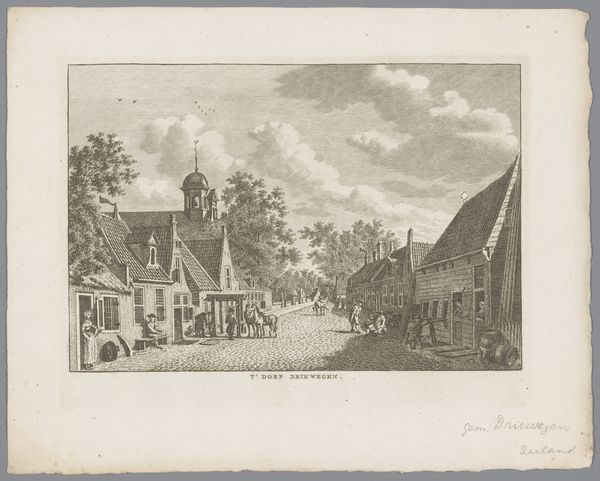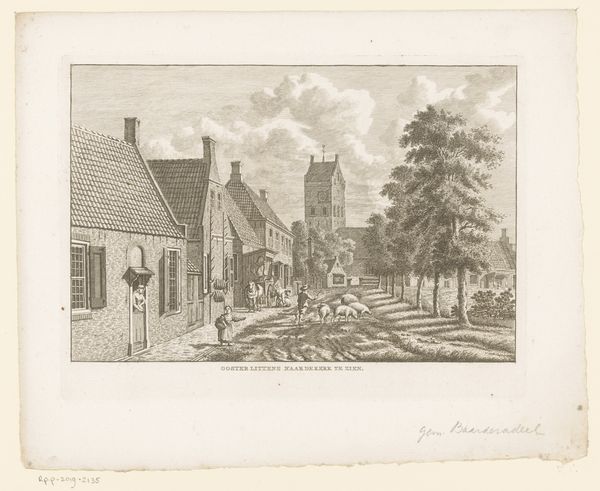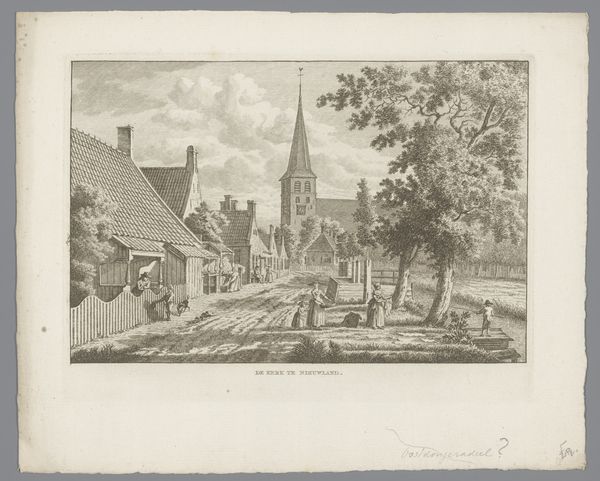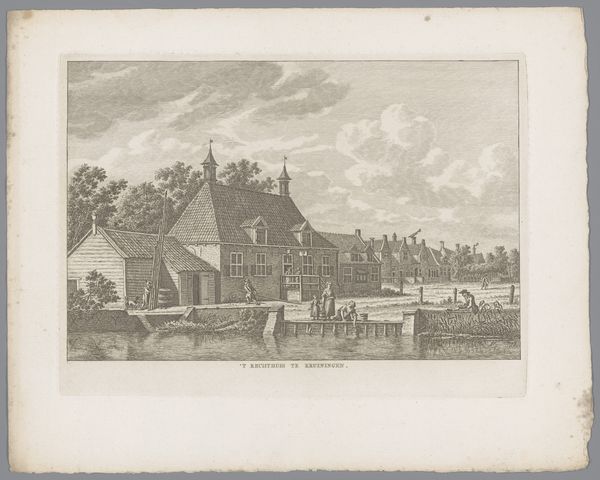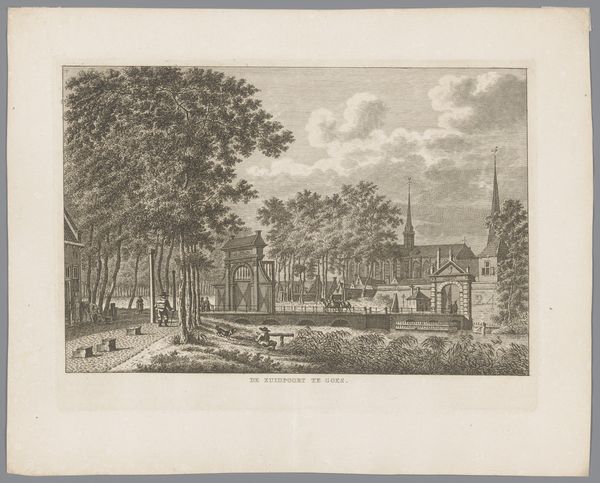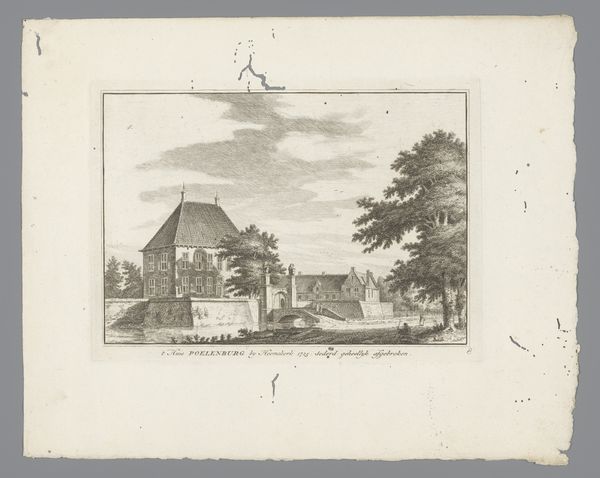
Dimensions: height 174 mm, width 240 mm
Copyright: Rijks Museum: Open Domain
Curator: Welcome! We are standing before Carel Frederik Bendorp's "Dorpsgezicht te Winsum," created between 1786 and 1792. This lovely vista of a village is held in the collection of the Rijksmuseum. Editor: My first thought is that this feels incredibly still. The engraving technique, of course, lends itself to precise lines and details, but there’s also a calmness achieved through the tonal balance. Curator: Absolutely. The Dutch Golden Age landscapes often idealised a peaceful existence in harmony with the natural landscape, whilst simultaneously capturing social hierarchies. Here, in Winsum, observe how life is captured by carefully framing and staging its people to fit this world. Notice anything? Editor: The composition directs the eye through that central pathway to the bridge. See how the buildings on either side seem to frame this journey, as if moving toward an unseen destination is their common intent? Curator: Note, also, the scale of those buildings to the figures. The buildings clearly are more impressive and significant for the message the piece sends as much as a symbol of wealth and success than domestic homes, even dominating in size. Do you think these are realistic or is this a comment on the period and its buildings' roles? Editor: It could very well be intentional, and is visually apparent through the engraver's style which brings detail to our eye but in some ways flattens the piece too. Perhaps that is because print, as a medium, lent itself well to a wider circulation than unique artworks – to communicate socio-political ideas about identity effectively at the time. Curator: The choice of subject—Winsum—likely wasn’t arbitrary either. It speaks to the prevailing socio-economic structure of the time, where cities like Winsum were vital trade hubs within their regions which sustained agricultural economies, so needed representing as part of a functioning and moral social structure for the population's viewing. Editor: Bendorp truly captures the intersection of bucolic tranquility and subtle underlying power structures, and how it permeates the visual culture of the era. This print encourages deep reading of its structure! Curator: Indeed. Looking closer always reveals how works of art reflect both aesthetic ideals and the world that formed their creators. Editor: A compelling snapshot that invites endless interpretations of form and meaning.
Comments
No comments
Be the first to comment and join the conversation on the ultimate creative platform.
